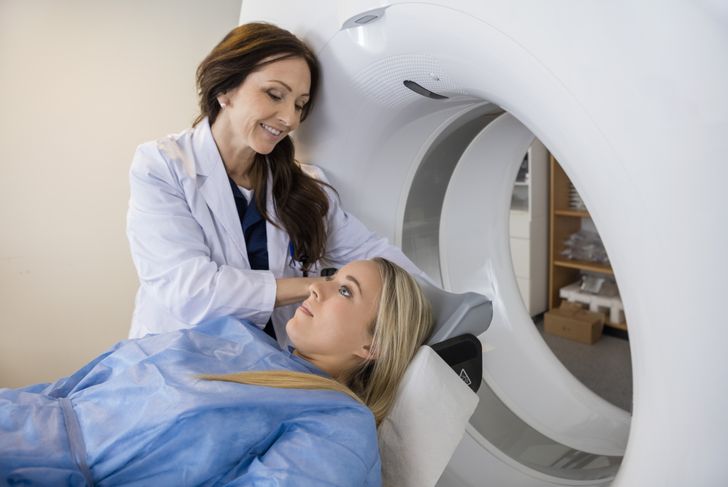A hemiplegic migraine is a type of a headache or a migraine that’s quite rare. The condition causes throbbing and intense pain as well as nausea, and a sensitivity to sounds and light. It can also cause numbness, tingling, and weakness. In more extreme cases, it can even cause a temporary paralysis which usually occurs right before a headache. A hemiplegic migraine typically affects a few people who develop a migraine with aura. This usually includes some visual symptoms such as seeing zigzag patterns or light flashes before or even during a migraine.
Types of a hemiplegic migraine
The type of a hemiplegic migraine you have is usually based on your family’s migraine history. There are two possible types you can have. The familial hemiplegic migraine or FHM affects 1-2 close relatives within a family. If you suffer from this type of a hemiplegic migraine, then your children may have a chance of inheriting FHM. The other type called sporadic hemiplegic migraine or SHM affects those who don’t have any history of a hemiplegic migraine in the family. Since the condition manifests itself in different symptoms, you should consult with a headache specialist or a neurologist for proper diagnosis.
Common triggers of a hemiplegic migraine
There are many factors which can trigger a hemiplegic migraine. These include bright light, feeling strong emotions, stress or even changes in the weather. You may also experience the condition when you’ve had too much or too little sleep. Sometimes, food and eating habits can also trigger hemiplegic migraines. If you eat too many salty foods, aged cheeses, processed foods, and those which contain high amounts of MSG. Also, skipping meals and consuming too much caffeine and alcohol can trigger the condition.
Causes of a hemiplegic migraine
Aside from the triggers, the leading cause of hemiplegic migraines is when there are mutations or changes to genes. Individually, these genes are CACNA1A, ATP1A2, PRRT2, and SCN1A. These genes are responsible for carrying the directions for producing the proteins which help in the communication of nerve cells. Any mutations in those genes can affect the release of neurotransmitters which are a kind of brain chemical. Therefore, any modifications or changes can interrupt the communication between the nerve cells and cause hemiplegic migraines.
The risk factors of a hemiplegic migraine
Usually, hemiplegic migraine attacks begin in childhood or young adults. If the condition runs in your family, there’s a higher likelihood that you’ll have this type of a migraine too. Even if just one of your parents suffers from hemiplegic migraines, there’s a 50% chance that you’ll get them also. If hemiplegic migraines run in your family, there’s very little chance of preventing them. The good news is there are medications you can take to reduce the number of headaches you experience.
The symptoms of a hemiplegic migraine
Usually, the symptoms of hemiplegic migraines have temporary effects. You may experience numbness, tingling or weakness on one side of your body. Other symptoms include visual disturbances, speech issues, dizziness, drowsiness or a loss of coordination. In rare cases though, some people who suffer from hemiplegic migraines experience symptoms which are more dangerous. These include memory loss, decreased consciousness, confusion, loss of motion control, and even a coma.
Short-term and long-term symptoms
The symptoms can go on for a couple of hours or days. But some people experience memory and attention issues for weeks or months. Usually, the symptoms of hemiplegic migraines are temporary. But there are rare cases when the condition has some permanent effects. These include language and sensory changes, involuntary movements of the eyes, and difficulties in coordination.
Diagnosis of a hemiplegic migraine
Doctors typically diagnose the condition based on the symptoms. It’s quite challenging to tell hemiplegic migraines apart from other types of diseases like epilepsy, stroke or multiple sclerosis. So to diagnose the condition correctly, the doctor would have to do some tests. These include a CT scan, an MRI, an electroencephalogram, or an echocardiogram. If one or more of your family members suffer from this condition, it’s a good idea to undergo genetic testing too. Unfortunately, this type of test isn’t always accurate. Also, researchers haven’t yet identified all of the genes associated with this condition.
Treating a hemiplegic migraine
The primary goal of the treatment of hemiplegic migraines is to manage the symptoms and reduce or prevent the occurrence. Usually, the procedure would include administration of specific medications. These include antiemetics, calcium channel blockers, pain medications, nasal ketamine, beta blockers, intravenous verapamil, and tricyclic antidepressants. Since there’s a risk of stroke, there are certain types of medications which aren’t suitable for those suffering from hemiplegic migraines. These medications include ergotamines and triptans which tend to constrict the blood vessels. Therefore, people who suffer from this condition and are at the hospital should wear their medical ID bracelet. This will be very helpful for doctors especially if the patient loses consciousness or suffers from impaired speech during an attack.
Preventing a hemiplegic migraine
Prevention is essential for those suffering from hemiplegic migraines. This is because the signs and symptoms are acute and severe and there are insufficient options for treatment. We’ve already discussed the different medications which can help prevent attacks or at least manage the symptoms. Some symptoms of hemiplegic migraines are very similar to those of stroke, epilepsy or other similar condition. That’s why this particular type of a migraine is quite scary for those who experience it. Since there’s no cure for the condition, it’s essential to get a proper diagnosis and start with the different treatment options.
Effects of a hemiplegic migraine
As people get older, a lucky few stop getting migraines. But for others, the condition remains. Fortunately, with the proper treatment, those who suffer from hemiplegic migraines can reduce or even prevent the attacks from happening.

 Home
Home Health
Health Diet & Nutrition
Diet & Nutrition Living Well
Living Well More
More




















